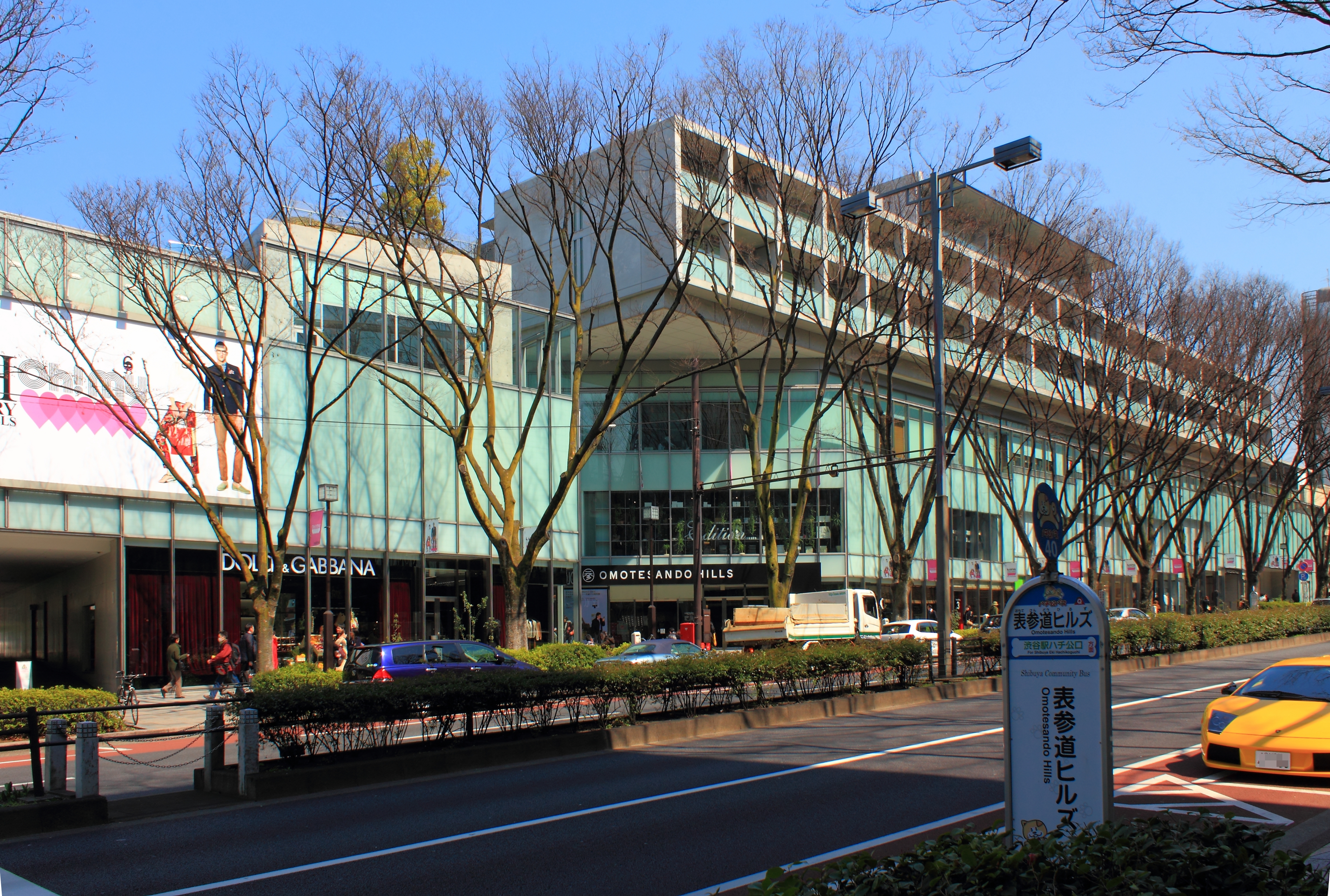Omotesando Hills on:
[Wikipedia]
[Google]
[Amazon]
logo

 is a shopping complex in central
is a shopping complex in central

 is a shopping complex in central
is a shopping complex in central Tokyo
Tokyo, officially the Tokyo Metropolis, is the capital of Japan, capital and List of cities in Japan, most populous city in Japan. With a population of over 14 million in the city proper in 2023, it is List of largest cities, one of the most ...
built in 2005 in a series of urban developments by Mori Building
is a Japanese family-owned property management firm. As of 2015, its president and CEO is Shingo Tsuji. Its headquarters are in the Roppongi Hills Mori Tower in Roppongi, Minato, Tokyo, Minato, Tokyo.
Mori Building has been managing office bui ...
. It occupies a 250-meter stretch of Omotesandō
is a Zelkova serrata, zelkova tree-lined avenue located in Shibuya, Tokyo, Shibuya and Minato, Tokyo, Minato, Tokyo, stretching from the Meiji Shrine entrance to Aoyama-dōri (Aoyama Street), where Omotesandō Station can be found.
History
Omot ...
, a shopping and (previously) residential road in Aoyama. It was designed by Tadao Ando
is a self-taught Japanese autodidact architect known for his unique integration of architecture and landscape. Architectural historian Francesco Dal Co described his work as an example of " critical regionalism". Ando received the prestigious ...
, and contains over 130 shops and 38 apartments.
The construction of Omotesando Hills, built at a cost of $330 million, was marked by controversy. The building replaced the Bauhaus
The Staatliches Bauhaus (), commonly known as the , was a German art school operational from 1919 to 1933 that combined Decorative arts, crafts and the fine arts.Oxford Dictionary of Art and Artists (Oxford: Oxford University Press, 4th edn., ...
-inspired Dōjunkai Aoyama Apartments, which had been built in 1927 after the 1923 Kantō earthquake. The demolition of the apartments again raised questions about Japan's interest in preserving historic buildings. A small section of the old apartments is reconstructed in the south-east part of the new complex. Minoru Mori noted that there had been resistance from local landowners to the use of Ando as architect, saying that they were concerned that his buildings were too fashionable for the area.
Regarding the construction, Ando said, "It's not Tadao Ando as an architect who has decided to rebuild and make shops, it was the owners themselves who wanted it to be new housing and to get some value with shops below. My task was how to do it in the best way.”
References
External links
* {{coord, 35.66725, N, 139.70874, E, source:placeopedia, display=title Shopping centres in Japan Buildings and structures in Shibuya Tadao Ando buildings Shopping malls established in 2005 Harajuku Mori Building 2005 establishments in Japan